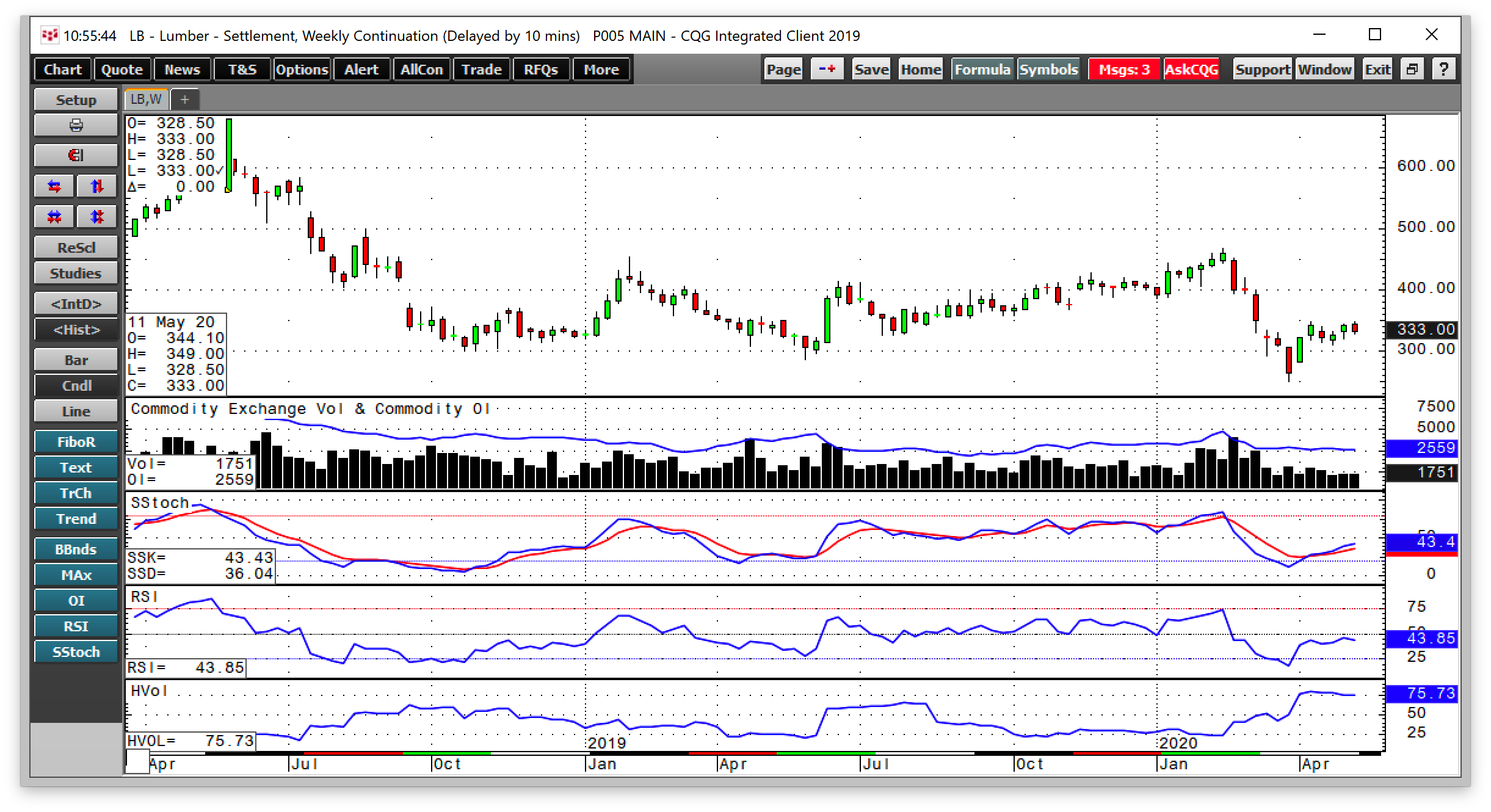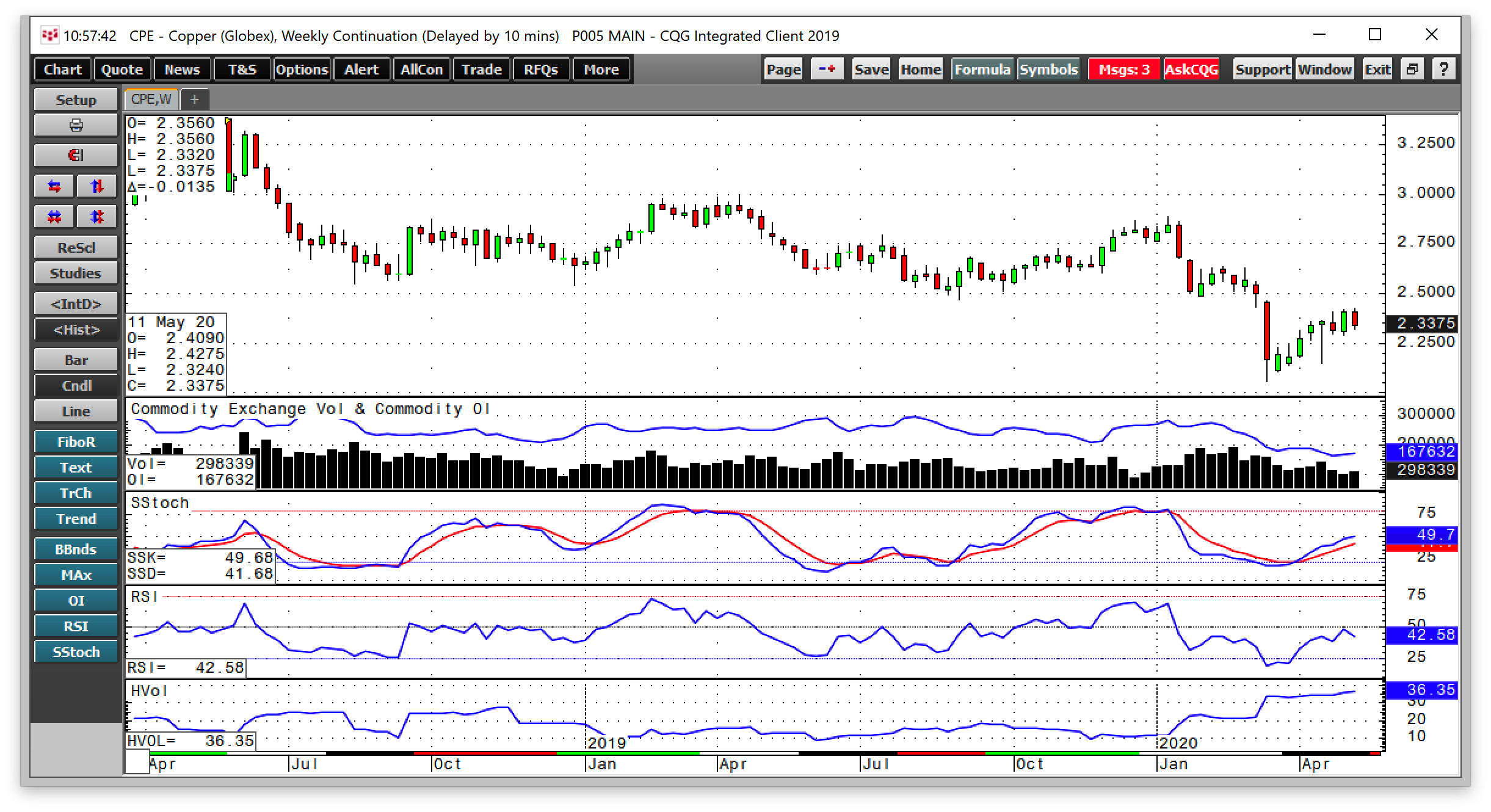Palantir launches Chain Reaction AI infrastructure platform with CenterPoint and NVIDIA
This article was written exclusively for Investing.com
- Industrial production data in the US reflects the economic coma of the past months
- Lumber recovered–a sign for new home and infrastructure construction
- Copper—a bellwether commodity for China—edged higher
Most investors and traders never venture into the highly leveraged and often volatile world of commodities futures. That's a shame, for it's a lost strategic opportunity no matter which assets they favor.
Indeed, those that do not pay close attention to raw material prices often wind up blindsided by events and trends that begin in the commodities asset class and impact other markets. I have found that three raw material markets, crude oil, copper, and lumber, can provide invaluable clues critical for investments across all asset classes.
There are many reasons for this. To begin with, each one of us is a consumer of these products every day. We power our lives with energy, live in a shelter built with metals and industrial commodities, and depend on agricultural products for nutrition.
Oil is the main ingredient that powers our vehicles. Copper pipes bring water to our faucets, and the metal has a myriad of other uses. Lumber is a fundamental building block for construction that provides shelter.
When it comes to investment portfolios, each of the companies we own in our retirement or other savings accounts is a commodities consumer. Prices for the raw materials impact the cost of goods sold that goes directly to bottom-line results and can cause a company's shares to move higher or lower.
At the end of last week, US industrial production data was ugly, in sync with other dire economic data over the past months. GDP is contracting, unemployment is rising, and industrial activity has ground to a halt.
US Industrial production data reflects the coma of the past months
Over the past weeks, the economic data has been awful and that's likely to continue. GDP in the US contracted by nearly 5% in the first quarter of 2020. Second-quarter numbers will be a lot worse.
Since March, over 36 million people in the US have lost jobs. Last Friday, the report that industrial output collapsed by 11.2% in April was another in a series of economic indicators that reflect the global COVID-19 pandemic.
A record decline in manufacturing pulled down the data. Manufacturing fell 13.7% because of a 70% reduction in the production of motor vehicles and parts. Excluding the automotive sector, manufacturing was 10.3% lower in April.
The declines came from factory shutdowns, the falling demand for oil output, and fewer power requirements. This data was a reminder that despite the recovery in the stock market, many factors continue to weigh on the US economy. Coronavirus is a global affair, so worldwide business activity is also still contracting.
Lumber Recovery: Sign Of New Home And Infrastructure Construction

Source all charts: CQG
As a critical industrial commodity, the price of lumber declined to its lowest level since early 2016 at the beginning of April.
The weekly chart shows that lumber futures fell from $468.30 per 1,000 board feet in mid-February to a low of $251.50 on April 1. The price recovered to the $333 level on the nearby futures contract at the end of last week.
July futures were trading at $345 per 1,000 board feet. Optimism in the stock market that lifted share prices from the March lows, coupled with low interest rates were responsible for the bounce in the price of wood. Lumber is a commodity that moves higher and lower with the demand for new home building and construction projects in the US.
The weekly chart shows that price momentum and relative strength indicators were below neutral readings as of May 15. Open interest at 2,559 contracts is low, which reflects the lack of liquidity in the lumber futures market. Illiquid markets tend to suffer from wide bid-offer spreads, making them susceptible to price gaps on the up and downside. Weekly historical volatility at almost 76% is near the highest level of 2020, as the weekly trading ranges have been wide.
The recovery in the price of lumber is a sign of optimism regarding the prospects for new home demand and infrastructure building. However, the path of least resistance for wood will be a function of economic conditions. Lumber was close to unchanged in the aftermath of the latest industrial production data.
Copper Edges Higher: Bellwether Commodity For China
Copper often goes by the nickname, Doctor Copper, because the red nonferrous metal can be a barometer for worldwide economic conditions. Since China is the leading consumer of the base metal, price strength or weakness in the copper market is often an indicator of the overall state of the Chinese economy.

The weekly chart of COMEX copper futures shows that the price reached a high of $2.8860 per pound in mid-January and fell to a low of $2.0595 in mid-March as markets melted on the back of the coronavirus outbreak. The price in March was the lowest for the red metal since June 2016.
Like lumber, copper recovered over the past weeks and was trading at just over the $2.33 level on the continuous contract at the end of last week.
Price momentum and relative strength were below neutral readings at the end of last week. Open interest—the total number of open long and short positions in the copper futures market—declined from almost 285,000 to below 168,000 contracts at the end of last week. The fall in the metric is a sign of risk-off as market participants exited risk positions and moved to the sidelines.
Weekly historical volatility at over 36% was at the highest level of the year. In addition, weekly trading ranges have increased.
Lumber and copper are two commodities that can signal economic growth or contraction. The price levels of the two industrial commodities were on the fence at the end of last week.
The markets are waiting for more data and signs of progress leading to the end of the global pandemic. Lumber and copper are two markets to put on your investment radar.
At times, the prices can move before other assets react to economic trends. Even if you never trade the base metal or wood, watching the price action can give you an edge when it comes to anticipating developments in the US and global economies.
